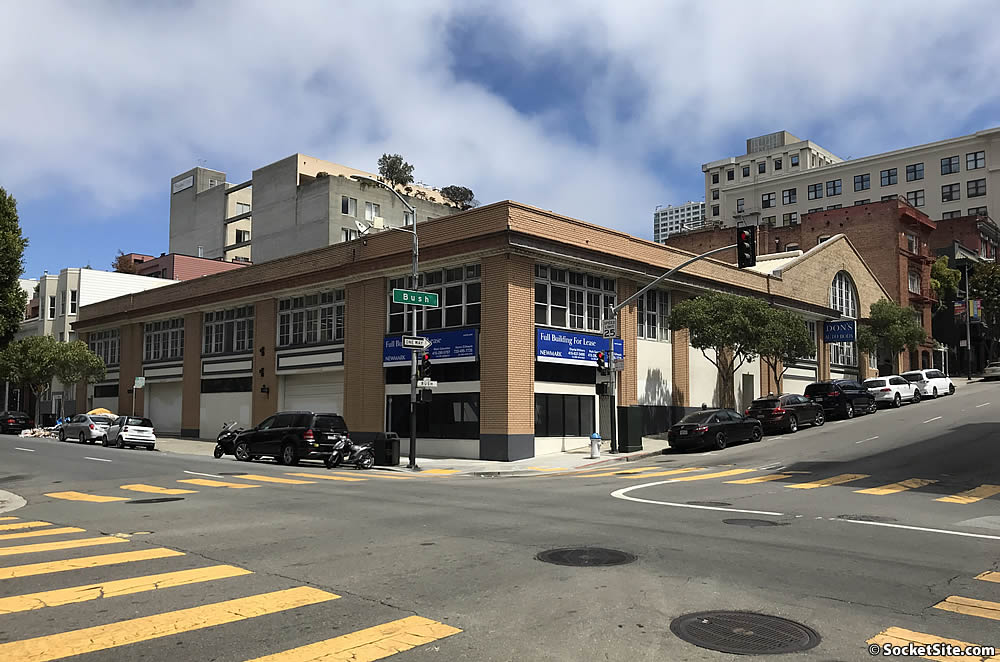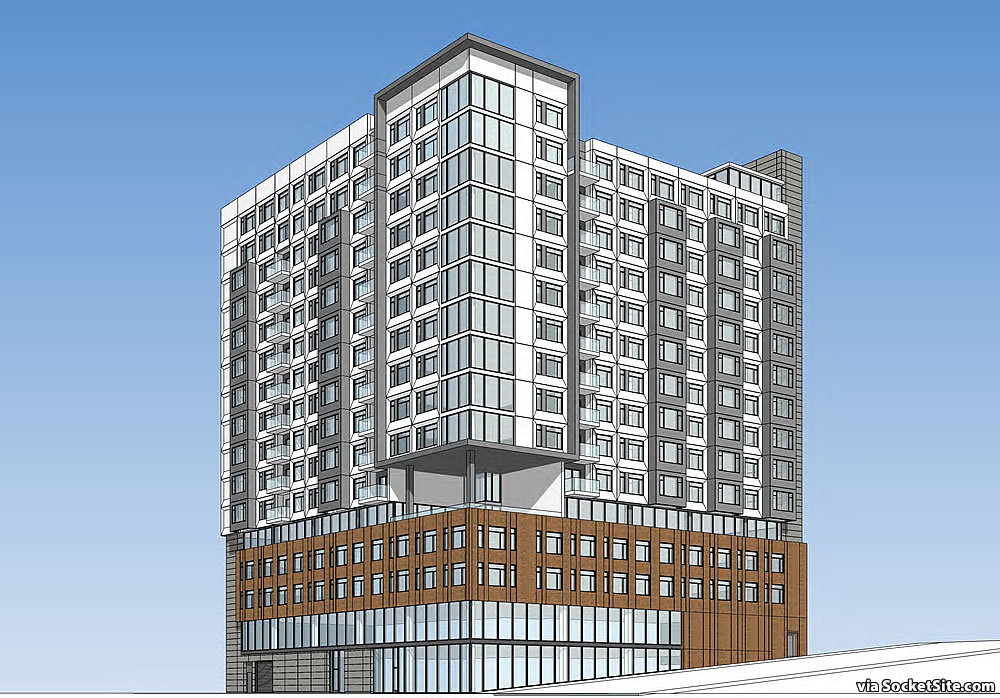The Planning Department’s preliminary review of the draft plans for a 16-story building, with 198 units of senior housing, to rise on the northeast corner of Larkin and Bush has raised a number of issues, including the proposed height of the development (which “far exceeds the Zoning Map maximum height of 80 feet”) and the claimed density bonus for the proposed project (which appears to have been miscalculated).
That being said, the results of the preliminary review could be moot as a new set of plans for the site are being drawn. And as newly envisioned, but yet to be rendered or fully spec(ifie)d, a 132-unit apartment building could now rise on the site, with two ground floor commercial/retail spaces as well.
Keep in mind that the existing building on the 1270 Bush Street site, which was built in 1914 for the Taxicab Company of California, was identified as a historic resource when surveyed for San Francisco’s Historic Auto Row. We’ll keep you posted and plugged-in.


The idea of a “historic auto row” is such a mockery of the idea of “historic resources”. The existing building is an ugly, small, and uninteresting warehouse that is not worthy of any protection. In comparison, the housing is desperately needed.
It’s also worth reflecting on how the approval process in this city consistently decreases the amount of housing that would otherwise be built. e.g. this location just dropped from 198 units to 132 a 33% decrease.
While easy to scapegoat “the approval process” for the likely reduction in the number of units, the potential density bonus for the project as originally proposed appears to have been miscalculated by the project team. And in fact, the maximum density for a senior housing project on the site, without the benefit of a properly applied density bonus, was calculated at 127 units.
It’s also a mockery because Auto Row didn’t exist for all that long anyway. There were car dealerships for a few decades. Then car dealerships moved to the suburbs. It’s silly to try to use a lost industry to preserve a bunch of mostly nondescript buildings.
Keep in mind that being deemed a historic resource doesn’t preclude the redevelopment of a parcel or the razing of a structure on the site, unlike being landmarked, but it could require measures to mitigate the loss, either in terms of incorporating features of the existing structure or memorializing its history by way of an exhibit or the like.
That’s fair, I just think it’s so arbitrary to choose to protect this style.
It’s not a style; it’s a type. Big difference there.
Whatever the difference is between a style and a type, I would call it a small difference.
Van Ness Auto Row existed from just around 1912 until the 2000. That’s a long time.
Not saying that every “contributor” is important, but it was a thing and there are many good buildings that are part of the district.
Sure it was a thing for a while. But cities change as industries change. I’m sure there used to be stables for all the horses. Should we have saved the stables, just to preserve a building style?
You mean a type?
amen
Is more housing a bad thing here? Especially senior housing that is needed yesterday. Seems like a “Bank error in your favor” from Monopoly type deal. Let them build more units!
A monstrous oversized building. And one imagines with bolt-on panels it would be a sad mess as proposed.
This is an overbearing, overly muscular building for the Polk/Larkin neighborhood – a huge jump up in scale from its surroundings. The corner pilotis-supported element looks as though it has been raised into a position to be soon carted away. If something this massive is built, it should have a smooth, evenly proportioned skin and be designed by an architecture firm well versed in the art of understated detailing.
They’re going for the max all over town. Taking advantage of a beleaguered political class and a flood of developer money, both for market rate but esp subsidized. 15 stories over by Franklin Sq park. Also a bunch strung along the north-south Mission corridors. And of course the 16th and Mission hulk. And they look literally like suburban Texas.
We need to max out height in all the new construction buildings we can to counter the fact that many low-rise homes, namely the architecturally interesting 1-3 story Victorians, will never be demolished. San Francisco will always be a low-rise type city, but we need to sneak in as many 6-15 story buildings as we can.
Someone played with a rubik’s cube too much as a kid….
You can learn much more about the Van Ness Auto Row historic district by reading the original documentation.
I love this giant thing. Maybe there will be a community of LGBTQ elders from the 70’s Polk Gulch era enjoying cocktails on the big patio and talking and laughing about the good old days.
Build it in Tahoe, where it’s actually needed.